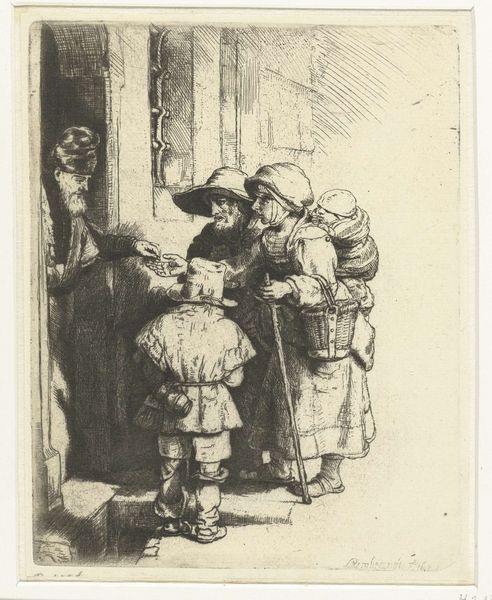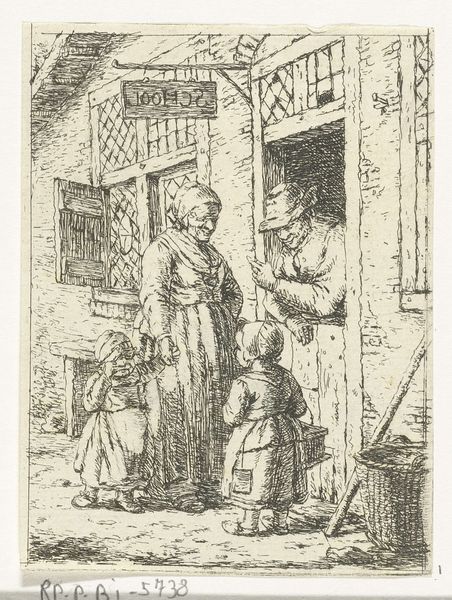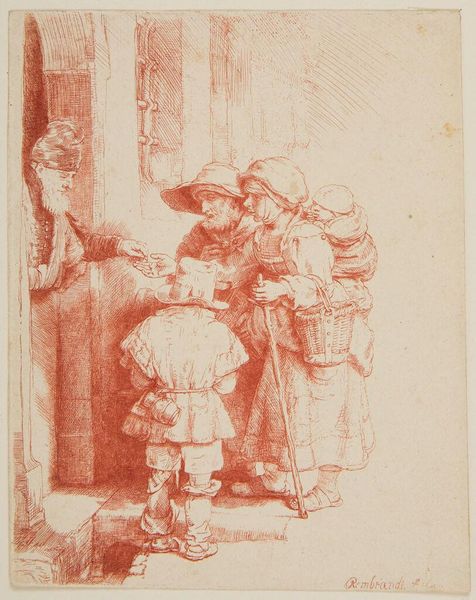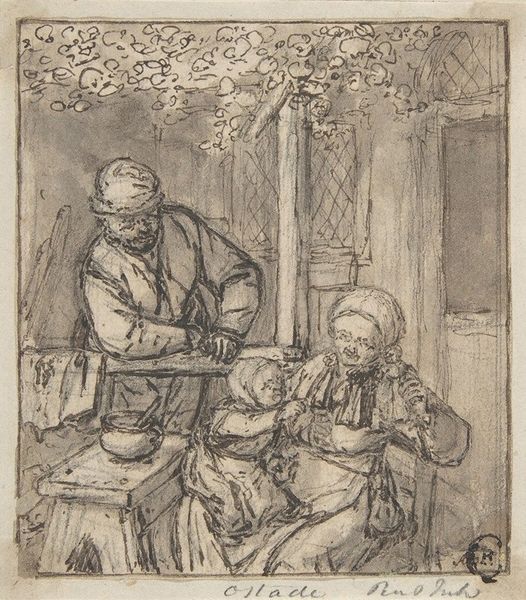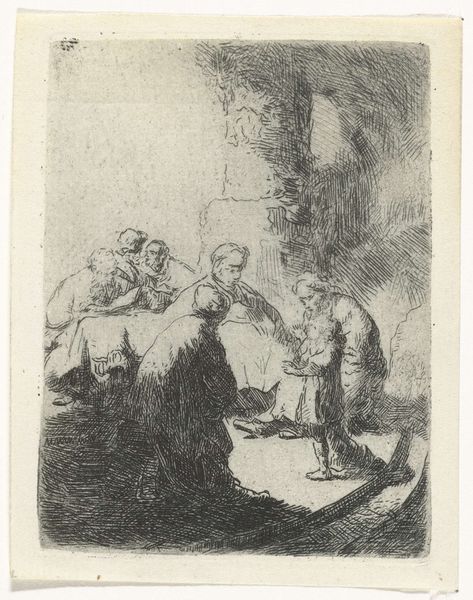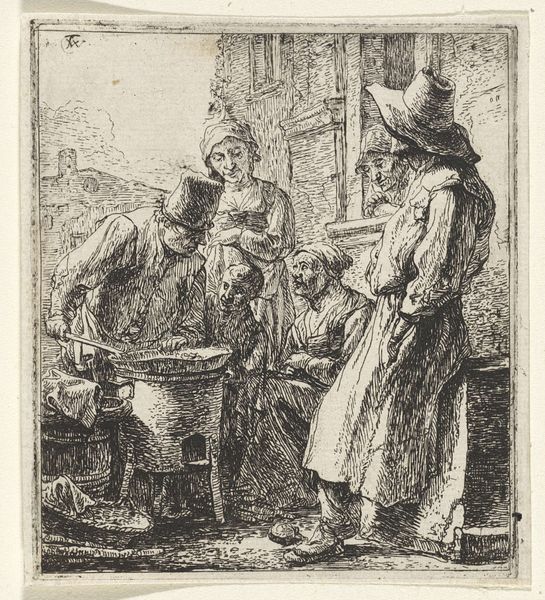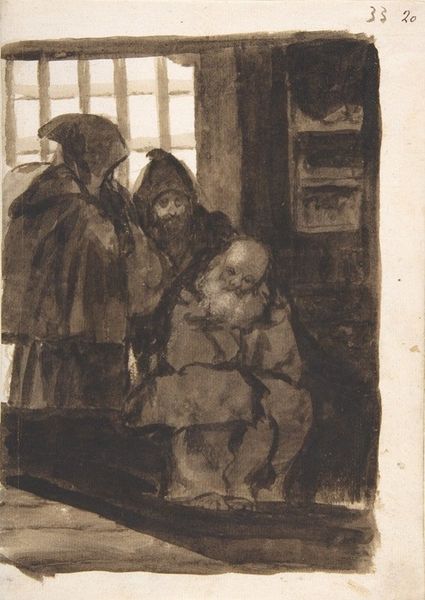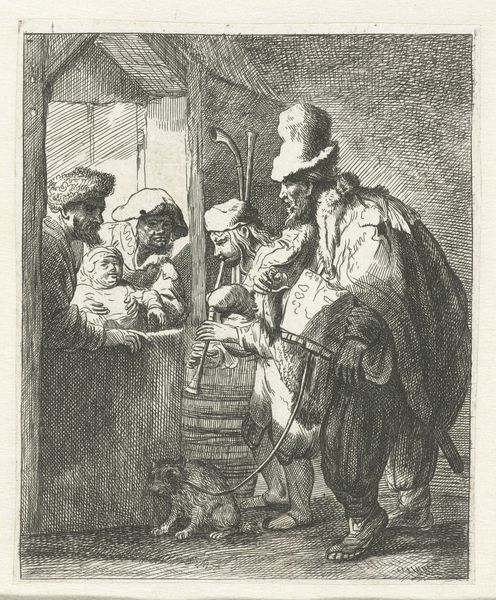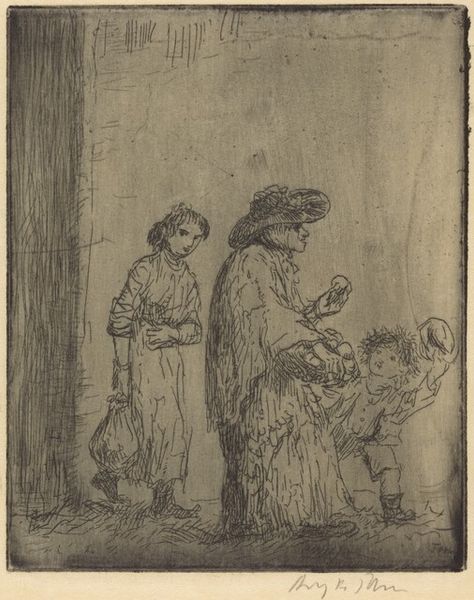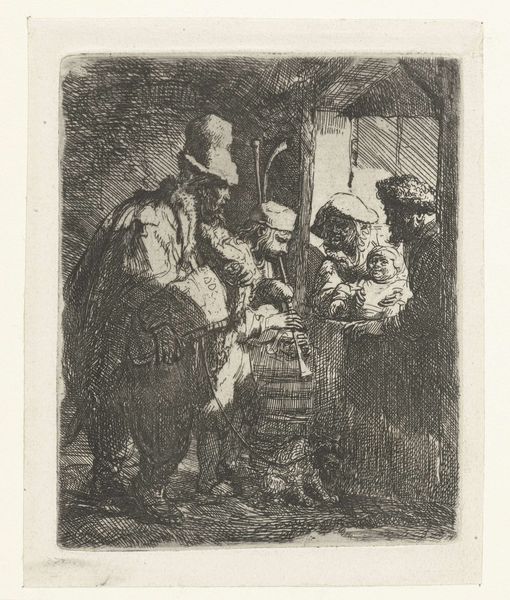
print, etching
#
portrait
#
narrative-art
#
baroque
#
dutch-golden-age
# print
#
etching
#
figuration
#
line
#
genre-painting
#
history-painting
#
realism
Dimensions: height 165 mm, width 128 mm
Copyright: Rijks Museum: Open Domain
Editor: So, here we have Rembrandt van Rijn’s etching, “A blind hurdy-gurdy player and family receiving alms,” from 1648. It’s a scene depicting poverty, and there's a certain… I don’t know, vulnerability that strikes me. What's your perspective on the work? Curator: Well, I see an intense engagement with the material realities of 17th-century Dutch society. Etching as a *process* becomes central here. Consider the economic dynamics: Rembrandt, as the producer, is creating an image consumed by a specific market, one that likely included the very wealthy *and* those who empathized with poverty even as they possessed relative economic advantages. Editor: So, you're saying the choice of etching is deliberate? Curator: Absolutely. Etching allowed for the mass production of images, making it more accessible and affordable. Rembrandt wasn’t just depicting poverty; he was creating a commodity *about* poverty. It invites a very complex set of interactions. Look closely at the figures – their worn clothing, the basket… Do these details influence our understanding of the depicted family? Editor: They make the scene seem realistic and relatable. Was Rembrandt attempting social commentary? Curator: Precisely. Consider the material conditions that allow this artwork to even *exist*. Rembrandt relied on laborers, materials, a market, and then the subject matter *is* labor. It raises essential questions: How is Rembrandt depicting labor and what commentary does this image offer to Dutch Golden Age society? What about the person giving alms - are they participating in a different material reality? Editor: That makes me consider who his audience may have been. Wealthy people who would perhaps contemplate helping those in need? Curator: Indeed. We have to think of who could actually consume this image. What is its purpose if not for those who have? Editor: So, understanding the artwork involves considering not only the image itself, but the broader economic and social conditions surrounding its creation and consumption? Curator: Precisely. It’s about unpacking the social and economic structures embedded within the artwork’s materials and process. It shows we’re all engaged in networks of capital, from the printmaker to the receiver of charity to *us*, looking and buying or consuming what images we can. Editor: I never thought of it that way, considering it from a point of view so close to the *ground.* It has been incredibly informative.
Comments
No comments
Be the first to comment and join the conversation on the ultimate creative platform.
